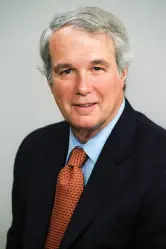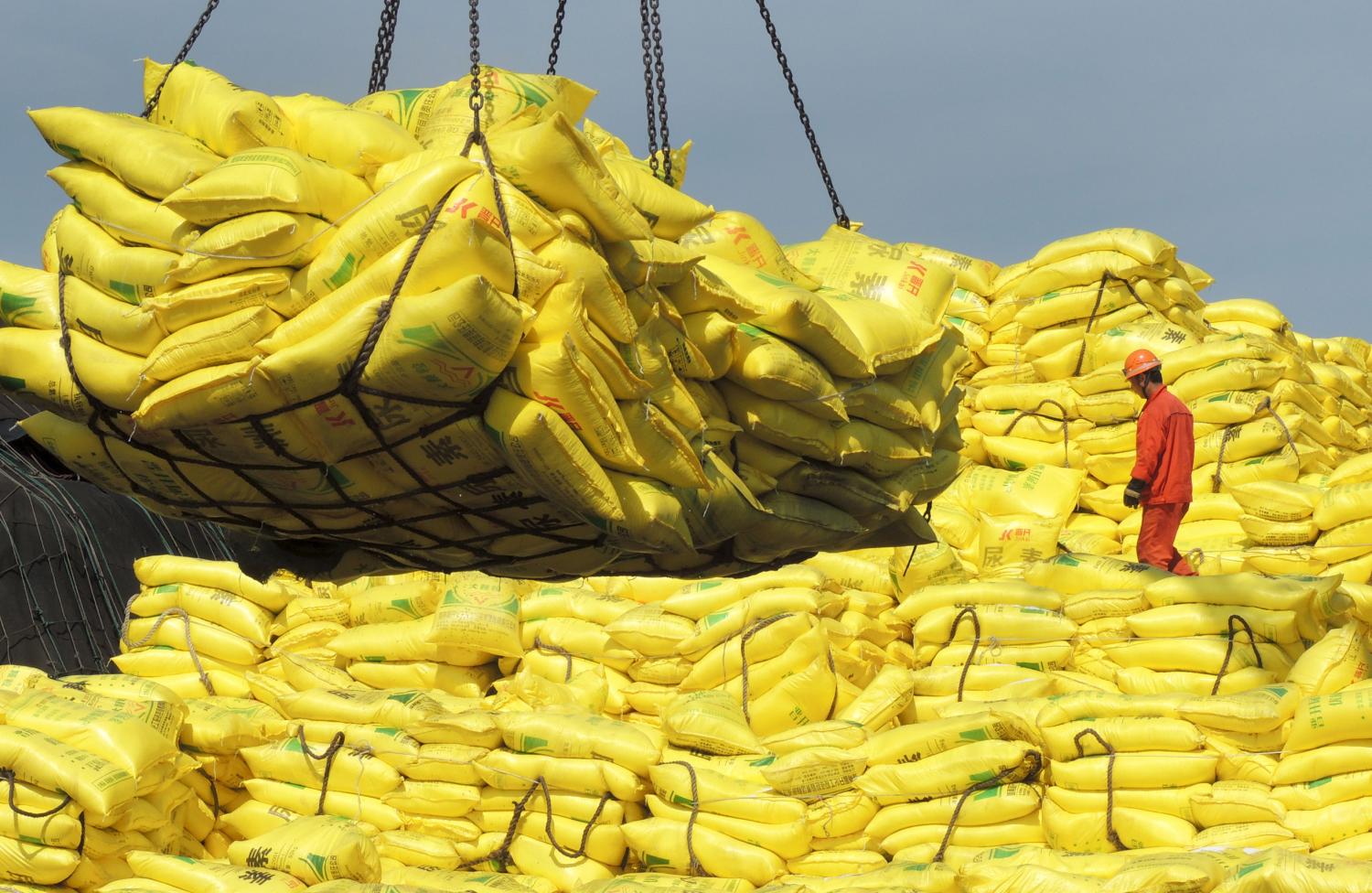2015 is a pivotal year. Three major workstreams among all the world’s nations are going forward this year under the auspices of the United Nations to develop goals, financing, and frameworks for the “post-2015 sustainable development agenda.” First, after two years of wide-ranging consultation, the U.N. General Assembly in New York in September will endorse a new set of global goals for 2030 to follow on from the Millennium Development Goals (MDGs) that culminate this year. Second, to support this effort, a financing for development (FFD) conference took place in July in Addis Ababa, Ethiopia, to identify innovative ways of mobilizing private and public resources for the massive investments necessary to achieve the new goals. And third, in Paris in December the final negotiating session will complete work on a global climate change framework.
These three landmark summits will, with luck, provide the broad strategic vision, the specific goals, and the financing modalities for addressing the full range of systemic threats. Most of all, these three summit meetings will mobilize the relevant stakeholders and actors crucial for implementing the post-2015 agenda—governments, international organizations, business, finance, civil society, and parliaments—into a concerted effort to achieve transformational outcomes. Achieving systemic sustainability is a comprehensive, inclusive effort requiring all actors and all countries to be engaged.
These three processes represent a potential historic turning point from “business-as-usual” practices and trends and to making the systemic transformations that are required to avoid transgressing planetary boundaries and critical tipping points. Missing from the global discourse so far is a realistic assessment of the political decisions and institutional innovations that would be required to implement the post-2015 sustainable development agenda (P2015).
For 2015, it is necessary is to make sure that by the end of year the three workstreams have been welded together as a singular vision for global systemic transformation involving all countries, all domestic actors, and all international institutions. The worst outcome would be that the new Sustainable Development Goals (SDGs) for 2030 are seen as simply an extension of the 2015 MDGs—as only development goals exclusively involving developing countries. This outcome would abort the broader purposes of the P2015 agenda to achieve systemic sustainability and to involve all nations and reduce it to a development agenda for the developing world that by itself would be insufficient to make the transformations required.
Systemic risks of financial instability, insufficient job-creating economic growth, increasing inequality, inadequate access to education, health, water and sanitation, and electricity, “breaking points” in planetary limits, and the stubborn prevalence of poverty along with widespread loss of confidence of people in leaders and institutions now require urgent attention and together signal the need for systemic transformation.
As a result, several significant structural changes in institution arrangements and governance are needed as prerequisites for systemic transformation. These entail (i) political decisions by country leaders and parliaments to ensure societal engagement, (ii) institutional innovations in national government processes to coordinate implementation, (iii) strengthening the existing global system of international institutions to include all actors, (iv) the creation of an international monitoring mechanism to oversee systemic sustainability trajectories, and (v) realize the benefits that would accrue to the entire P2015 agenda by the engagement of the systemically important countries through fuller utilization of G20 leaders summits and finance ministers meetings as enhanced global steering mechanisms toward sustainable development. Each of these changes builds on and depends on each other.
I. Each nation makes a domestic commitment to a new trajectory toward 2030
For global goal-setting to be implemented, it is essential that each nation go beyond a formal agreement at the international level to then embark on a national process of deliberation, debate, and decision-making that adapts the global goals to the domestic institutional and cultural context and commits the nation to them as a long-term trajectory around which to organize its own systemic transformation efforts. Such a process would be an explicitly political process involving national leaders, parliaments or rule-making bodies, societal leaders, business executives, and experts to increase public awareness and to guide the public conversation toward an intrinsically national decision which prioritizes the global goals in ways which fit domestic concerns and circumstances. This political process would avoid the “one-size-fits-all” approach and internalize and legitimate each national sustainability trajectory.
So far, despite widespread consultation on the SDGs, very little attention has been focused on the follow-up to a formal international agreement on them at the U.N. General Assembly in September 2015. The first step in implementation of the SDGs and the P2015 agenda more broadly is to generate a national commitment to them through a process in which relevant domestic actors modify, adapt, and adopt a national trajectory the embodies the hopes, concerns and priorities of the people of each country. Without this step, it is unlikely that national systemic sustainability trajectories will diverge significantly enough from business-as-usual trends to make a difference. More attention needs to now be given to this crucial first step. And explicit mention of the need for it should appear in the UNGA decisions in New York in September.
II. A national government institutional innovation for systemic transformation
The key feature of systemic risks is that each risk generates spillover effects that go beyond the confines of the risk itself into other domains. This means that to manage any systemic risk requires broad, inter-disciplinary, multi-sectoral approaches. Most governments have ministries or departments that manage specific sectoral programs in agriculture, industry, energy, health, education, environment, and the like when most challenges now are inter-sectoral and hence inter-ministerial. Furthermore, spillover linkages create opportunities in which integrated approaches to problems can capture intrinsic synergies that generate higher-yield outcomes if sectoral strategies are simultaneous and coordinated.
The consequence of spillovers and synergies for national governments is that “whole-of-government” coordinating committees are a necessary institutional innovation to manage effective strategies for systemic transformation. South Korea has used inter-ministerial cabinet level committees that include private business and financial executives as a means of addressing significant interconnected issues or problems requiring multi-sectoral approaches. The Korea Presidential Committee on Green Growth, which contained more than 20 ministers and agency heads with at least as many private sector leaders, proved to be an extremely effective means of implementing South Korea’s commitment to green growth.
III. A single global system of international institutions
The need for a single mechanism for coordinating the global system of international institutions to implement the P2015 agenda of systemic transformation is clear. However, there are a number of other larger reasons why the forging of such a mechanism is crucial now.
The Brettons Woods era is over. It was over even before the initiative by China to establish the Asia Infrastructure Investment Bank (AIIB) in Beijing and the New Development Bank (NDB) in Shanghai. It was over because of the proliferation in recent years of private and official agencies and actors in development cooperation and because of the massive growth in capital flows that not only dwarf official development assistance (concessional foreign aid) but also IMF resources in the global financial system. New donors are not just governments but charities, foundations, NGOs, celebrities, and wealthy individuals. New private sources of financing have mushroomed with new forms of sourcing and new technologies. The dominance of the IMF and the World Bank has declined because of these massive changes in the context.
The emergence of China and other emerging market economies requires acknowledgement as a fact of life, not as a marginal change. China in particular deserves to be received into the world community as a constructive participant and have its institutions be part of the global system of international institutions, not apart from it. Indeed, China’s Premier, Li Keqiang, stated at the World Economic Forum in early 2015 that “the world order established after World War II must be maintained, not overturned.”
The economic, social and environmental imperatives of this moment are that the world’s people and the P2015 agenda require that all international institutions of consequence be part of a single coordinated effort over the next 15 years to implement the post-2015 agenda for sustainable development. The geopolitical imperatives of this moment also require that China and China’s new institutions be thoroughly involved as full participants and leaders in the post-2015 era. If nothing else, the scale of global investment and effort to build and rebuild infrastructure requires it.
It is also the case that the post-2015 era will require major replenishments in the World Bank and existing regional development banks, and significantly stronger coordination among them to address global infrastructure investment needs in which the AIIB and the NDB must now be fully involved. The American public and the U.S. Congress need to fully grasp the crucial importance for the United States, of the IMF quota increase and governance reform. These have been agreed to by most governments but their implementation is stalled in the U.S. Congress. To preserve the IMF’s role in the global financial system and the role of the U.S. in the international community, the IMF quota increase and IMF governance reform must be passed and put into practice. Congressional action becomes all the more necessary as the effort is made to reshape the global system of international institutions to accommodate new powers and new institutions within a single system rather than stumble into a fragmented, fractured, and fractious global order where differences prevail over common interests.
The IMF cannot carry out its significant responsibility for global financial stability without more resources. Other countries cannot add to IMF resources proportionately without U.S. participation in the IMF quota increase. Without the US contribution, IMF members will have to fund the IMF outside the regular IMF quota system, which means de-facto going around the United States and reducing dramatically the influence of the U.S. in the leadership of the IMF. This is a self-inflicted wound on the U.S., which will damage U.S. credibility, weaken the IMF, and increase the risk of global financial instability. By blocking the IMF governance reforms in the IMF agreed to by the G-20 in 2010, the U.S. is single-handedly blocking the implementation of the enlargement of voting shares commensurate with increased emerging market economic weights. This failure to act is now widely acknowledged by American thought leaders to be encouraging divergence rather than convergence in the global system of institutions, damaging U.S. interests.
IV. Toward a single monitoring mechanism for the global system of international institutions
The P2015 agenda requires a big push toward institutionalizing a single mechanism for the coordination of the global system of international institutions. The international coordination arrangement today, is the Global Partnership for Effective Development Cooperation created at the Busan High-Level Forum on Aid Effectiveness in 2011. This arrangement, which recognizes the increasingly complex context and the heightened tensions between emerging donor countries and traditional western donors, created a loose network of country platforms, regional arrangements, building blocks and forums to pluralize the architecture to reflect the increasingly complex set of agents and actors. This was an artfully arranged compromise, responding to the contemporary force field four years ago.
Now is a different moment. The issues facing the world are both systemic and urgent; they are not confined to the development of developing countries, and still less to foreign aid. Geopolitical tensions are, if anything, higher now than then. But they also create greater incentives to find areas of cooperation and consensus among major powers who have fundamentally different perspectives on other issues. Maximizing the sweet spots where agreement and common interest can prevail is now of geopolitical importance. Gaining agreement on institutional innovations to guide the global system of international institutions in the P2015 era would be vital for effective outcomes but also importantly ease geopolitical tensions.
Measurement matters; monitoring and evaluation is a strategic necessity to implementing any agenda, and still more so, an agenda for systemic transformation. As a result, the monitoring and evaluation system that accompanies the P2015 SDGs will be crucial to guiding the implementation of them. The UN, the OECD, the World Bank, and the IMF all have participated in joint data gathering efforts under the IDGs in the 1990s and the MDGs in the 2000s. Each of these institutions has a crucial role to play, but they need to be brought together now under one umbrella to orchestrate their contributions to a comprehensive global data system and to help the G20 finance ministers coordinate their functional programs.
The OECD has established a strong reputation in recent years for standard setting in a variety of dimensions of the global agenda. Given the strong role of the OECD in relation to the G20 and its broad outreach to “Key Partners” among the emerging market economies, the OECD could be expected to take a strong role in global benchmarking and monitoring and evaluation of the P2015 Agenda. The accession of China to the OECD Development Centre, which now has over fifty member countries, and the presence and public speech of Chinese Premier Li Keqiang at the OECD on July 1st, bolsters the outreach of the OECD and its global profile.
But national reporting is the centerpiece and the critical dimension of monitoring and evaluation. To guide the national reporting systems and evaluate their results, a new institutional arrangement is needed that is based on national leaders with responsibility for implementation of the sustainable development agendas from each country and is undertaken within the parameters of the global SDGs and the P2015 benchmarks.
V. Strengthening global governance and G20 roles
G-20 leaders could make a significant contribution to providing the impetus toward advancing systemic sustainability by creating a G-20 Global Sustainable Development Council charged with pulling together the national statistical indicators and implementing benchmarks on the SDGs in G-20 countries. The G-20 Global Sustainable Development Council (G-20 GSDC) would consist of the heads of the presidential committees on sustainable development charged with coordinating P2015 implementation in G-20 countries. Representing systemically important countries, they would also be charged with assessing the degree to which national policies and domestic efforts by G20 countries generate positive or negative spillover effects for the rest of the world. This G-20 GSDC would also contribute to the setting of standards for the global monitoring effort, orchestrated perhaps by the OECD, drawing on national data bases from all countries using the capacities of the international institutions to generate understanding of global progress toward systemic sustainability.
The UN is not in a position to coordinate the global system of international institutions in their functional roles in global sustainable development efforts. The G-20 itself could take steps through the meetings of G-20 Finance Ministers to guide the global system of international institutions in the implementation phase of the P2015 agenda to begin in 2016. The G-20 already has a track record in coordinating international institutions in the response to the global financial crisis in 2008 and its aftermath. The G-20 created the Financial Stability Board (FSB), enlarged the resources for the IMF, agreed to reform the IMF’s governance structure, orchestrated relations between the IMF and the FSB, brought the OECD into the mainstream of G-20 responsibilities and has bridged relations with the United Nations by bringing in finance ministers to the financing for development conference in Addis under Turkey’s G-20 leadership.
There is a clear need to coordinate the financing efforts of the IMF, with the World Bank and the other regional multilateral development banks (RMDBs), with the AIIB and the BRICS NDB, and with other public and private sector funding sources, and to assess the global institutional effort as whole in relation to the P2015 SDG trajectories. The G-20 Finance Ministers grouping would seem to be uniquely positioned to be an effective and credible means of coordinating these otherwise disparate institutional efforts. The ECOSOC Development Cooperation Forum and the Busuan Global Partnership provide open inclusive space for knowledge sharing and consultation but need to be supplemented by smaller bodies capable of making decisions and providing strategic direction.
Following the agreements reached in the three U.N. workstreams for 2015, the China G-20 could urge the creation of a formal institutionalized global monitoring and coordinating mechanism at the China G-20 Summit in September 2016. By having the G-20 create a G-20 Global Sustainable Development Council (G-20 GSDC), it could build on the national commitments to SDG trajectories to be made next year by U.N. members countries and on the newly formed national coordinating committees established by governments to implement the P2015 Agenda, giving the G-20 GSDC functional effectiveness, clout and credibility. Whereas there is a clear need to compensate for the sized-biased representation of the G20 with still more intensive G-20 outreach and inclusion, including perhaps eventually considering shifting to a constituency based membership, for now the need in this pivotal year is to use the momentum to make political decisions and institutional innovations which will crystallize the P2015 strategic vision toward systemic sustainability into mechanisms and means of implementation.
By moving forward on these recommendations, the G-20 Leaders Summits would be strengthened by involving G-20 leaders in the people-centered P2015 Agenda, going beyond finance to issues closer to peoples’ homes and hearts. Systemically important countries would be seen as leading on systemically important issues. The G-20 Finance Ministers would be seen as playing an appropriate role by serving as the mobilizing and coordinating mechanism for the global system of international institutions for the P2015 Agenda. And the G-20 GSDC would become the effective focal point for assessing systemic sustainability not only within G20 countries but also in terms of their positive and negative spillover effects on systemic sustainability paths of other countries, contributing to standard setting and benchmarking for global monitoring and evaluation. These global governance innovations could re-energize the G20 and provide the international community with the leadership, the coordination and the monitoring capabilities that it needs to implement the P2015 Agenda.
Conclusion
As the MDGs culminate this year, as the three U.N. workstreams on SDGs, FFD, and UNFCC are completed, the world needs to think ahead to the implementation phase of the P2015 sustainable development agenda. Given the scale and scope of the P2015 agenda, these five governance innovations need to be focused on now so they can be put in place in 2016.
These will ensure (i) that national political commitments and engagement by all countries are made by designing, adopting, and implementing their own sustainable development trajectories and action plans; (ii) that national presidential committees are established, composed of key ministers and private sector leaders to coordinate each country’s comprehensive integrated sustainability strategy; (iii) that all governments and international institutions are accepted by and participate in a single global system of international institutions; (iv) that a G-20 monitoring mechanism be created by the China G-20 in September 2016 that is comprised of the super-minister officials heading the national presidential coordinating committees implementing the P2015 agenda domestically in G-20 countries, as a first step; and (v) that the G-20 Summit leaders in Antalya in November 2015 and in China in September 2016 make clear their own commitment to the P2015 agenda and their responsibility for its adaption, adoption and implementation internally in their countries but also for assessing G-20 spillover impacts on the rest of the world, as well as for deploying their G-20 finance ministers to mobilize and coordinate the global system of international institutions toward achieving the P2015 agenda.
Without these five structural changes, it will be more likely that most countries and actors will follow current trends rather than ratchet up to the transformational trajectories necessary to achieve systemic sustainability nationally and globally by 2030.
References
Ye Yu, Xue Lei and Zha Xiaogag, “The Role of Developing Countries in Global Economic Governance—With a Special Analysis on China’s Role”, UNDP, Second High-level Policy Forum on Global Governance: Scoping Papers, (Beijing: UNDP, October 2014).
Zhang Haibing, “A Critique of the G-20’s Role in UN’s post-2015 Development Agenda”, in Catrina Schlager and Chen Dongxiao (eds), China and the G-20: The Interplay between an Emerging Power and an Emerging Institution, (Shanghai: Shanghai Institutes for International Studies [SIIS] and the Friedrich Ebert Stiftung [FES], 2015) 290-208.
Global Review, (Shanghai: SIIS, 2015,) 97-105.
Colin I. Bradford, “Global Economic Governance and the Role International Institutions”, UNDP, Second High-level Policy Forum on Global Governance: Scoping Papers, (Beijing: UNDP, October 2014).
Colin I. Bradford, “Action implications of focusing now on implementation of the post-2015 agenda.”, (Washington: The Brookings Institution, Global Economy and Development paper, September 2015).
Colin I. Bradford, “Systemic Sustainability as the Strategic Imperative for the Future”, (Washington: The Bookings Institution, Global Economy and Development paper; September 2015).
Wonhyuk Lim and Richard Carey, “Connecting Up Platforms and Processes for Global Development to 2015 and Beyond: What can the G-20 do to improve coordination and deliver development impact?”, (Paris: OECD Paper, February 2013).
Xiaoyun Li and Richard Carey, “The BRICS and the International Development System: Challenge and Convergence”, (Sussex: Institute for Development Studies, Evidence Report No. 58, March 2014).
Xu Jiajun and Richard Carey, “China’s Development Finance: Ambition, Impact and Transparency,” (Sussex : Institute for Development Studies, IDS Policy Brief, 2015).
Soogil Young, “Domestic Actions for Implementing Integrated Comprehensive Strategies: Lessons from Korea’s Experience with Its Green Growth Strategy”, Washington: Paper for the Brookings conference on “Governance Innovations to Implement the Post-2015 Agenda for Sustainable Development”, March 30, 2015).




